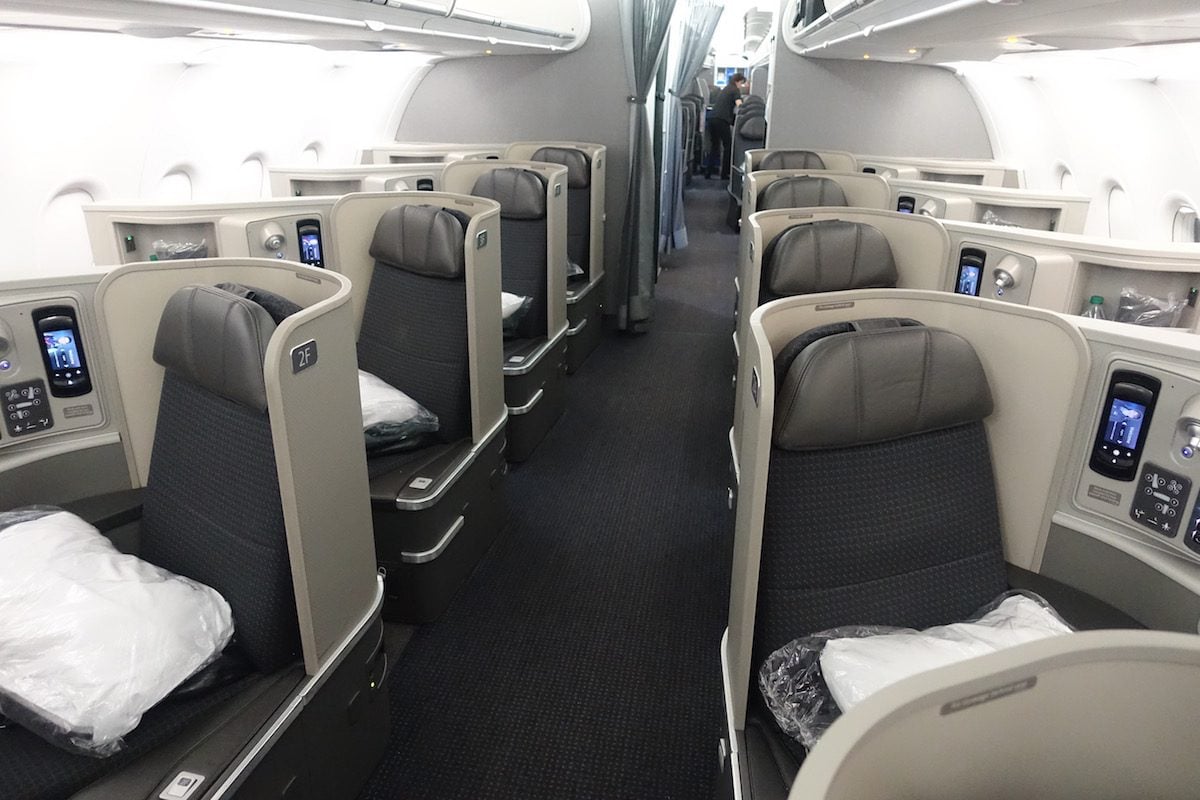
American Airlines Airbus A321 First Class Cabin Photos
Is a premium first-class viable in three and four-class narrowbody markets? Twenty years ago, first class was differentiated from the rest of airline cabins. More recently, the differentiation between first and business class has diminished with the introduction of international business class sleeper seats. Many carriers are eliminating first class and introducing a business class product that is a first-class equivalent.
While a few carriers have introduced first-class suites that are quite elaborate in some markets, including Etihad and Singapore Airlines, others are introducing suites into their business-class operations, including Delta’s A350 fleet. The difference between first and business is blurring, extending to US domestic operations in specific narrowbody markets. The question is: can a premium first-class remain viable against business-class sleepers in those markets?
Looking at the LOPA (layout of passenger amenities) on an aircraft-by-aircraft basis, Skailark developed a cost model that compares the footprints of each class and calculates the cost per seat based on the cabin area for a one-way trip. Their data illustrates the dilemma of carriers flying similar first and business-class products and the costs associated with a separate first class.
Let’s use the New York-Los Angeles market as an example, which is served by a mixture of narrow-body and wide-body aircraft. Of particular interest is the A321, flown by American and JetBlue. The table below breaks down the cost of each flight by class, based on area footprint, for JetBlue’s A321neo with its multi-class configuration for 160 passengers and American’s A321ceo with 102 seats. These aircraft have the same cabin, so the comparison is apples to apples.
American offers two classes of service with sleeper seats. Their 10-seat premium first-class cabin has a 1×1 layout, and their business-class cabin is in a 2×2 configuration. A full LOPA diagram can be found here. JetBlue’s Mint business class has an unusual seating arrangement with rows of 2×2 seating followed by 1×1 in a staggered configuration, as shown in this LOPA. As a result, JetBlue’s Mint product lies somewhere between American’s first and business classes in space and seating arrangements.

Examining the cabin costs, the number that stands out is the high cost of American’s first-class product. On a one-way segment from JFX to LAX, the Skailark cost model shows that this product costs American $1,611 each way or roughly $3,222 round trip.
If we assume a revenue load factor of 80%, American must charge $2,014 per seat each way to break even in first-class on this route. For a round-trip, two days hence on Expedia, the fare quoted on AA is $3,363 in first-class. That means American is not breaking even in first-class, even with a 100% load factor and no frequent flyer upgrades from business to first.
Contrast that with JetBlue, whose Mint class service offered round-trip fares ranging from $1,990 to about $2,480, averaging about $1,150 one way. With a cost one-way of about $621 in business class, JetBlue’s pricing shows a strong margin over cost between, resulting in a break-even load factor of 68%. American’s business class, with comparable fare levels in the market, also appears to be profitable, with a break-even load factor of about 81%. In a heavy premium-class market, both appear to be realistic and profitable.
So the question of whether a first class is viable in key markets comes down to the underlying economics and digging into the data. In this case, American’s first-class LOPA is unsustainable from a cost standpoint and appears to be losing money. But JetBlue and American Airlines business class layouts appear profitable. The following table illustrates the revenue and costs for the premium cabins for both American and JetBlue on the JFK-LAX route.
American has far more premium seats on its A320 than JetBlue’s, at 30 versus 16, but let’s examine the yield from premium cabins, assuming an 80% paid load factor. The results show that American, charging approximately $1,682 for its ten first-class seats one way and $1,150 for its 20 business class one way, would net about $686 in premium cabin profits each flight based on the costs shown above. JetBlue, with its 16 business class seats with revenues of approximately $1,150 in business class, yields profits per flight of $4,640 in its premium cabins. Based on the results, we conclude that premium first-class is not economically viable in the New York- Los Angeles market versus fully flat business-class competition.
Views: 60




